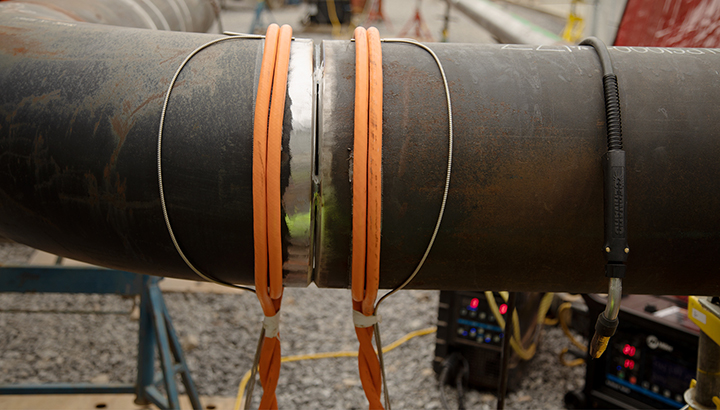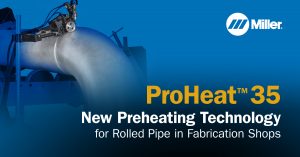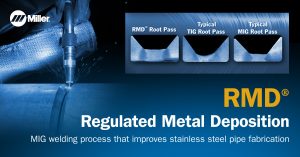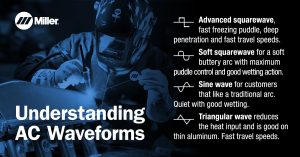Using an induction heating system for welding preheat and post-weld stress relief can save time and improve productivity.
What is induction heating?
A wide range of industries have long used induction heating, and the technology has been a success story for nearly two decades in industrial and construction welding applications, including refineries, petrochemical, pipeline, structural, shipbuilding, pressure vessel repair and mining.
Many welding applications require preheat, which minimizes the temperature difference between the arc and the base material. Preheating slows the weld cooling rate and lowers hydrogen — two factors that help reduce the risk of cracking and the potential for a failed weld.
When preheating or post-weld stress relieving are necessary, induction can save significant time and provide temperature consistency up to 780°C — while also offering benefits for safety and weld quality.
How does induction heating work?
Preheating involves heating the base material — or at least the area surrounding the weld joint — to a specific temperature before welding. When preheat is required, the minimum temperature is part of the welding procedure specification (WPS).
Induction heating systems employ non-contact heating. They induce heat electromagnetically and through hysteresis. Heating tools are placed on or around an electrically conducting object, and the magnetic field creates eddy currents inside the part, exciting the part’s molecules and generating heat. As a result, the workpiece itself is the source of the heat, not the heating tools.
Compare this to two other common methods for preheating: resistance and open flame. Resistance heats the material from the outside, using ceramic pads that become hot and transfer heat. Open flame uses fire to heat a part.
Induction heating is easy to set up, offers a fast time-to-temperature, and delivers exceptional heating efficiency and uniformity in joint temperature. In addition, induction offers safety benefits compared to resistance and open flame heating methods. Resistance heating is much slower to setup — approximately three hours per joint compared to 20 minutes or less for induction. Resistance also has a slow time-to-temperature, sometimes taking up to three hours, as well as marginal uniformity in joint temperature and much higher operating costs per joint.
Component options for induction heating
Induction is commonly used for heat treatment in pipe fabrication and welding. But many contractors don’t realize induction can deliver benefits in a wide range of applications, including welding flat plate, moving parts and other part geometries. The Miller® ProHeat™ 35 Induction Heating System is available with numerous air- and liquid-cooled options, depending on the job requirements.
Air-cooled
Air-cooled blankets or air-cooled cables are easily laid onto or wrapped around the part. Designed with flexibility and efficiency in mind, air-cooled cables or blankets can fit almost any induction preheating application and don’t require a cooler and coolant, which can save time and eliminate some costs in welding preheat. Air-cooled systems can be used for preheating applications up to 200°C.
Liquid-cooled
This type of system can be used for applications that require high-temperature preheating and stress relieving. Liquid-cooled induction offers the widest range of temperatures for preheat, hydrogen bake out and post-weld heating treatment — with the ability to heat up to 780°C. The principle differences compared to air-cooled systems are the addition of a water cooler and the use of a flexible liquid-cooled hose that houses the induction coil. Liquid-cooled systems generally use a built-in temperature controller and outside temperature recorder, which are particularly important components in stress relieving applications.
Rolling induction
The majority of pipe welds completed in fabrication shops are rolled. Rotating pipe while welding provides many benefits, including ease of achieving quality welds by eliminating out-of-position welding, reduced welder fatigue, and improved productivity from higher wire feed speeds and increased deposition rates. The ProHeat 35 Induction Heating System with Rolling Inductor allows fab shops to preheat work pieces — including moving parts — and delivers fast, consistent heat up to 315°C.
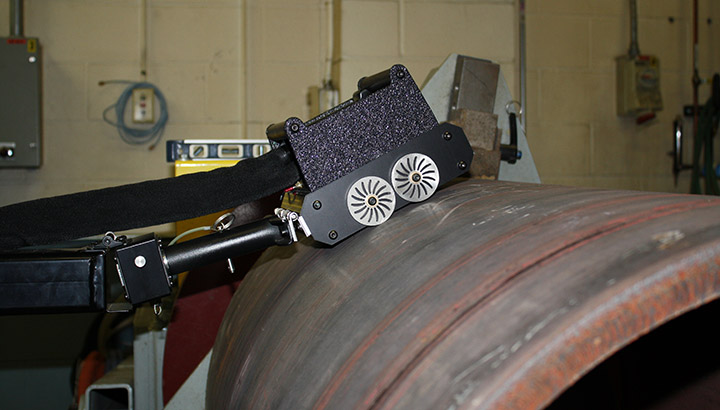
Induction heating benefits
Compared to using open flame or resistance for preheating and stress relieving, induction offers numerous advantages. Some key benefits of induction include:
Temperature uniformity
Induction heating distributes heat energy evenly over the area where the coil is wound or the blanket is placed, providing even, consistent heat to the base material. In comparison, flame heating requires manual motion that is difficult to control, while resistance heating pads often do not touch the part consistently, causing uneven heat and stresses on the weld. ProHeat systems use sensors to accurately report and record the joint temperature. Induction heating components also make cycle interruptions unlikely, which is critical to productivity in stress relieving.
Reduced cycle time
Induction provides significantly faster setup and time-to-temperature. Resistance heating often requires a preheating contractor, which can result in delays and long heating time that cause welder downtime. With induction, welders can heat their own parts, maximizing efficiency. And the time-to-temperature can be achieved in minutes compared to hours for resistance heating. On thick, thin and odd-shaped parts, it’s not uncommon to expect a more than 50% reduction in total cycle time with induction.
Efficiency/utility costs
The induction heating process is very efficient, and most of the electrical energy used actually generates heat inside the part. Utility costs are typically much lower than other methods. With flame heating, the majority of the heat energy created is wasted in the open air. Resistance heating wastes electrical energy because of the large transformer in the power supply, and because only one side of the heating element sits against the cold part. Many customers who convert to induction heating can earn rebates from utility companies because of the efficiency improvements.
Versatility
Induction can be used on many shapes, sizes and types of parts, from pipe and flat plate to elbows and valves. One aspect of induction that makes it attractive for complex shapes is the ability to adjust the coils during the heating process to accommodate unique parts and heat sinks.
Minimized safety risks
Flame and resistance methods heat workpieces from the outside in, so they carry the risk of burn injuries. Resistance heating uses ceramic pads that stay hot long after the joint has been brought to temperature, while flame heating carries the risk of fires and even explosion. With induction, only the workpiece gets hot; the cables, blankets and wraps don’t, so there’s less chance of injuries or accidents and the operator is less fatigued from the heat.
Decreased consumables costs
The insulation used in induction is easy to attach to workpieces and can be reused over and over. Also, induction coils are robust and don’t require fragile wire or ceramic materials. Compare this to the ceramic fiber insulation used in resistance heating, which can be used only once or twice before it must be discarded, requiring a large inventory of insulation and significant costs for disposal of potentially hazardous material.
Ease of use
A major benefit of induction is its simplicity. Insulation, blankets and cables are simple to install, usually taking less than 15 minutes, and they can be easily adjusted.
Final thoughts
Induction heating is an efficient, consistent method for preheating, bakeout and stress relieving a wide range of part shapes and types in welding applications. It offers a fast time-to-temperature, provides great flexibility for a variety of applications and materials, and is a safer alternative compared to other heating methods. In most welding applications, induction heating is the best choice to save time and money.


